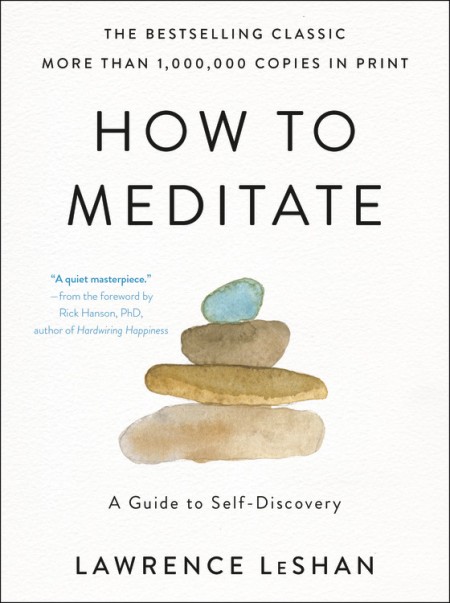
Meditation is one of the most popular treatments for headaches. Meditation is a proven way to relax and reduce tension. People who suffer from frequent headaches or migraines may find it very helpful. Meditation helps to identify the cause of the pain. It can also help to reduce migraines or the daily occurrence of headaches by practicing this type of meditation.
Research has shown that meditation can relieve headache pain. Many studies have shown that meditation can relieve pain-related headaches by clearing the mind from negative thoughts and encouraging focus. Research has shown that meditation may reduce migraine-related disability and pain intensity. It's important to note that there are two types of mediation - mindfulness and kundalini. Both practices work by allowing the person to disengage from all of his or her thoughts and feel better.

It is beneficial in treating headache pain but can be difficult for those who have never tried meditation. It requires participants to be silent for long periods of the day, stop thinking and just focus on the present. It can be daunting for someone who has never tried meditation. However, there are many methods that can help with migraine pain. Once you understand what you are doing, you can practice.
Meditation can reduce the intensity and duration of migraines, according to some studies. In North Carolina, for example, 19 migraineurs were assigned to a stress-reduction program by Wake Forest Baptist Medical Center. It included mindfulness meditation, yoga, as well as yoga. The meditation sessions were 30 minutes long. Although the benefits were not statistically significant, they did show shorter headaches. This may be a good idea for anyone who suffers from chronic headaches.
Meditation has many benefits, not only does it reduce headache pain but also offers other benefits. Meditation can reduce stress and relax the body. It also lowers the severity and frequency for migraines. It also increases pain tolerance. In one study, 92 patients were assigned to a mindfulness-based meditation program. The study subjects were taught to meditate for one hour each day. These results were seen in just four weeks, whereas the participants in the control group received no benefit at all.

Meditation for migraines may be able to reduce the severity and frequency of migraine attacks, according to another study. By increasing the heart rate variability, it helps improve cardiovascular health, sleep better, and improve psychological resilience to stress. Those suffering from chronic headaches should try meditation for headaches to reduce the number of migraines. It will help them lead a more stress-free existence. It will also improve their mood. Meditation helps to reduce their migraines and improves their overall health.
FAQ
How can I tell what is good for me?
You must listen to your body. Your body knows what you need when it comes time to eat, exercise, and get enough rest. To avoid overdoing it, it's important that you pay attention to what your body is telling you. You must listen to your body to ensure you are healthy.
How do I count calories?
Perhaps you are wondering what the best diet is for you. or "is counting calories necessary?" The answer to this question depends on many factors, including your current health, your personal goals and preferences, as well as your overall lifestyle.
The Best Diet For Me: Which One Is Right?
My current health, my personal goals and lifestyle will determine the best diet for me. There are many diets available, some good and others not so good. Some diets work better than others. What should I do then? How do I make the right decision?
These questions are addressed in this article. It starts with a brief introduction of the different types of diets available today. Then we will discuss the pros & cons of each kind of diet. Finally, we'll look into how to choose the best one for you.
Let's look at some of the main types of diets to get started.
Diet Types
There are three main types: low-fat, high-protein, or ketogenic. Let's briefly discuss them below.
Low Fat Diets
A low-fat diet is one that limits the intake of fats. This is done through reducing the intake of saturated fats (butter, cream cheese, etc.) It is possible to replace these saturated fats with unsaturated ones (olive oil or avocados). Low fat diets are often recommended to those who wish to lose weight quickly. This diet can cause constipation, heartburn, and stomach problems. A person may also experience vitamin deficiencies if they don't get enough vitamins.
High Protein Diets
High protein diets discourage carbohydrates and encourage the use of proteins. These diets typically have more protein than other diets. These diets are meant to increase muscle mass, and burn more calories. They may not be able to provide sufficient nutrition for people who need it. They are also very restrictive, so they might not be appropriate for everyone.
Ketogenic Diets
The keto diet is also known as the keto diet. They are high in fat and moderate in protein and carbs. They are commonly used by athletes and bodybuilders, as they allow them train harder and more frequently without getting tired. You must adhere to all side effects, including fatigue, headaches, nausea and headaches.
What is the difference of fat and sugar?
Fat is an energy source that comes directly from food. Sugar is a sweet substance found naturally in fruits and vegetables. Both sugars and fats have the same calories. But fats are twice as calories as sugars.
Fats are stored within the body and can contribute to obesity. They can cause cholesterol buildup, which can lead you to heart attacks and strokes.
Sugars can be quickly absorbed by your body and give you instant energy. This causes blood glucose levels rise. High blood glucose levels can pose a danger because they increase the chance of developing type II Diabetes.
How can I live a life that is full of joy every day?
Find out what makes YOU happy. This is the first step in living a life that you love. Once you have a clear understanding of what makes you happy you can go backwards. Asking other people how they live their best lives every day is also a good idea.
Dr. Wayne Dyer's book "How to Live Your Best Life" is also available. He discusses finding happiness and fulfillment throughout our lives.
Exercise: Good or Bad for Immunity?
Exercise is good to your immune system. Your body makes white blood cells that fight infections when you exercise. You can also eliminate toxins from the body. Exercise is a great way to prevent heart disease, cancer, and other diseases. It also reduces stress levels.
Exercising too frequently can make your immune system weaker. When you exercise too hard, your muscles will become sore. This can lead to inflammation and swelling. In order to fight infection, your body must produce more antibodies. Problem is, extra antibodies can trigger allergies and other autoimmune conditions.
So, don't overdo it!
Statistics
- The Dietary Guidelines for Americans recommend keeping added sugar intake below 10% of your daily calorie intake, while the World Health Organization recommends slashing added sugars to 5% or less of your daily calories for optimal health (59Trusted (healthline.com)
- According to the Physical Activity Guidelines for Americans, we should strive for at least 150 minutes of moderate intensity activity each week (54Trusted Source Smoking, harmful use of drugs, and alcohol abuse can all seriously negatively affect your health. (healthline.com)
- WHO recommends reducing saturated fats to less than 10% of total energy intake; reducing trans-fats to less than 1% of total energy intake; and replacing both saturated fats and trans-fats to unsaturated fats. (who.int)
- This article received 11 testimonials and 86% of readers who voted found it helpful, earning it our reader-approved status. (wikihow.com)
External Links
How To
How to Live a Healthy Lifestyle
A healthy lifestyle is one where you are able to maintain your weight, your health and your fitness level. This lifestyle includes healthy eating habits, regular exercise, adequate sleep, and abstaining from drugs, alcohol, caffeine, tobacco and other harmful substances. A healthy lifestyle helps you stay fit and feel good about yourself. You are also less likely to develop chronic diseases such heart disease and stroke, diabetes or cancer.
The primary goal of this project was provide a step to help people live a healthier lifestyle. The introduction was the first section of the project. It explains the importance of a healthy lifestyle, how it can be achieved, and who you are. The body paragraphs contain tips on how to maintain a healthy lifestyle. I then wrote the conclusion. This summarises the article and provides additional resources if desired.
I was able to learn how concisely and clearly I could write my paragraphs through this assignment. I also learned how topic sentences and supporting details can be organized. Additionally, I learned how to organize my ideas into topic sentences and supporting details. Finally, I learned how to properly use grammar when writing.